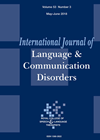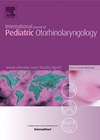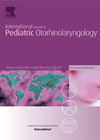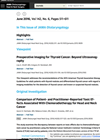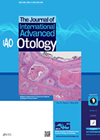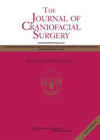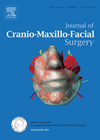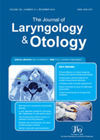
Journal Reviews archive for November 2014
Ideal terminology for unexplained paediatric language problems
This paper aims to open a discussion about the different labels being used to refer to children’s unexplained language impairments. A wide range of terminology has been applied creating confusion, impeding progress of research and access to appropriate services. For...
Friendly bacteria in the ear nose and throat to combat the bad…
The author presents a thorough review of bacterial interference and the studies that have been conducted in common ENT conditions. The simple concept is that a strong population of normal flora will interfere with colonisation and subsequent infection by pathogenic...
Cochlear implants with an absent or hypoplastic cochlear nerve?
The cornerstone of successful cochlear implantation has been the presence of a population of cochlear nerve endings which are able to mount a neural response to electrical stimulation. The authors of this paper present their experience of five children with...
Do we need to intervene after complications of acute sinusitis in children?
omplications of acute sinusitis in children are not uncommon and some are managed surgically. The authors of this paper reviewed their experience of subsequent chronic rhinosinusitis (CRS). Nine of 86 patients required surgery in the 12 months after their initial...
Extent of central neck dissection in the patients with thyroid carcinoma
The first level of lymphatic spread in well-differentiated thyroid carcinoma is to the central compartment of the neck, namely, the paratracheal, prelaryngeal and pretracheal lymph nodes. Central neck dissection may carry an increased morbidity, namely, hypoparathyroidism and recurrent laryngeal nerve...
Pomegranate juice as an otoprotective agent
Chemotherapeutic agents such as cisplatin, given alongside irradiation, offer a survival advantage in head and neck cancer. Some patients often complain bitterly about side-effects of their treatment, one of which is ototoxicity. In this paper, the authors propose the use...
A conservative approach to treat ameloblastoma
Ameloblastoma is an odontogenic tumour that is benign but locally aggressive and is associated with local recurrence. They are rare, accounting for 1% of oral tumours, and occur almost exclusively in the jaws. It is more common in the mandible...
Reconstruction after parotid surgery
This is a retrospective study from Naples, Italy. The authors compare patients with benign parotid disease that were reconstructed with three different techniques. In total 224 patients between February 2002 and March 2009 were included; these patients had either formal...
Free flap reconstruction in stage three bisphosphonate-related osteonecrosis
There is no widely accepted gold standard for the treatment of bisphosphonate-related osteonecrosis of the jaw (BRONJ). Early BRONJ is managed conservatively but there is controversy regarding the treatment of the later stages. Stage three is defined as exposed bone...
An analysis of 60 treated cystic lesions in children
This is a retrospective single-centre study of 60 consecutive cases in children. Children aged four months to 14-years-old underwent intervention under general anaesthetic from 2000 to 2012. As one might expect, most of these cysts were mucoceles and ranulas. Of...
Factors affecting the occurrence of salivary fistula after total laryngectomy
It is generally believed that patients should be fed by nasogastric tube for 7-10 days after undergoing total laryngectomy or laryngopharyngectomy to avoid the occurrence of post-operative salivary fistula. This study challenges this belief and looks into various factors that...
Application of paper patching in patulous eustachian tube
The condition of patulous eustachian tube, as opposed to dysfunctional eustachian tube, is less frequently diagnosed. Symptoms related to this, such as autophony, aural fullness, ‘being under water’, ‘hearing their own breathing’, and hearing sensitivity (varying in either direction) can...

